There are a large number of conifer tree species in Britain, some native and others non-native.
With so many varieties spanning the UK countryside, it can be difficult to identify one variety from the next. Is it a Scots pine, a Norwegian spruce or a Douglas fir?
One method of conifer identification is to look closely at their cones – these are the mature female flowers of conifer trees. They protect the tree’s seeds, opening to release them when conditions are right for germination.
Examine their size, shape, texture and colour and you stand a good chance of being able to ID the tree species.
Conifer cone ID guide
Scots pine, Pinus sylvestris
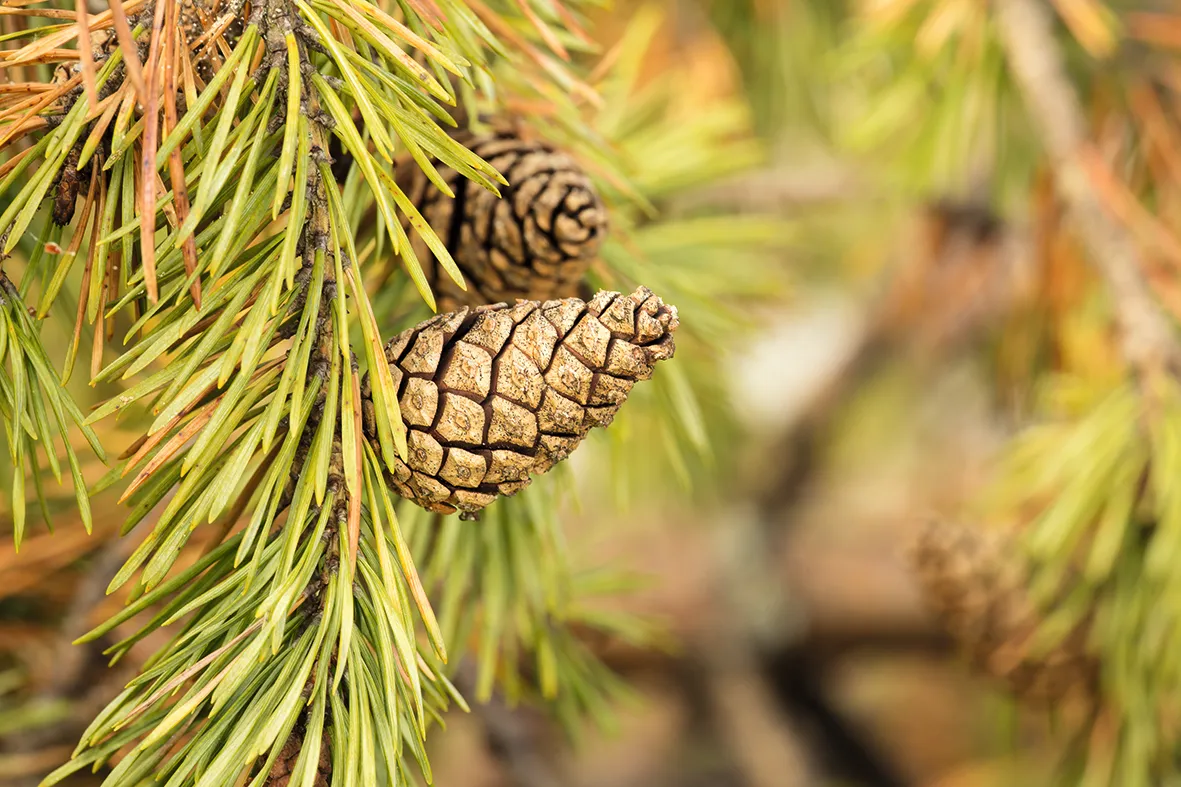
Scots pine cones are 3–7.5cm long. The female cone matures from red to green and then woody grey-brown with a circular bump at the end of each scale.
Sitka spruce, Picea sitchensis
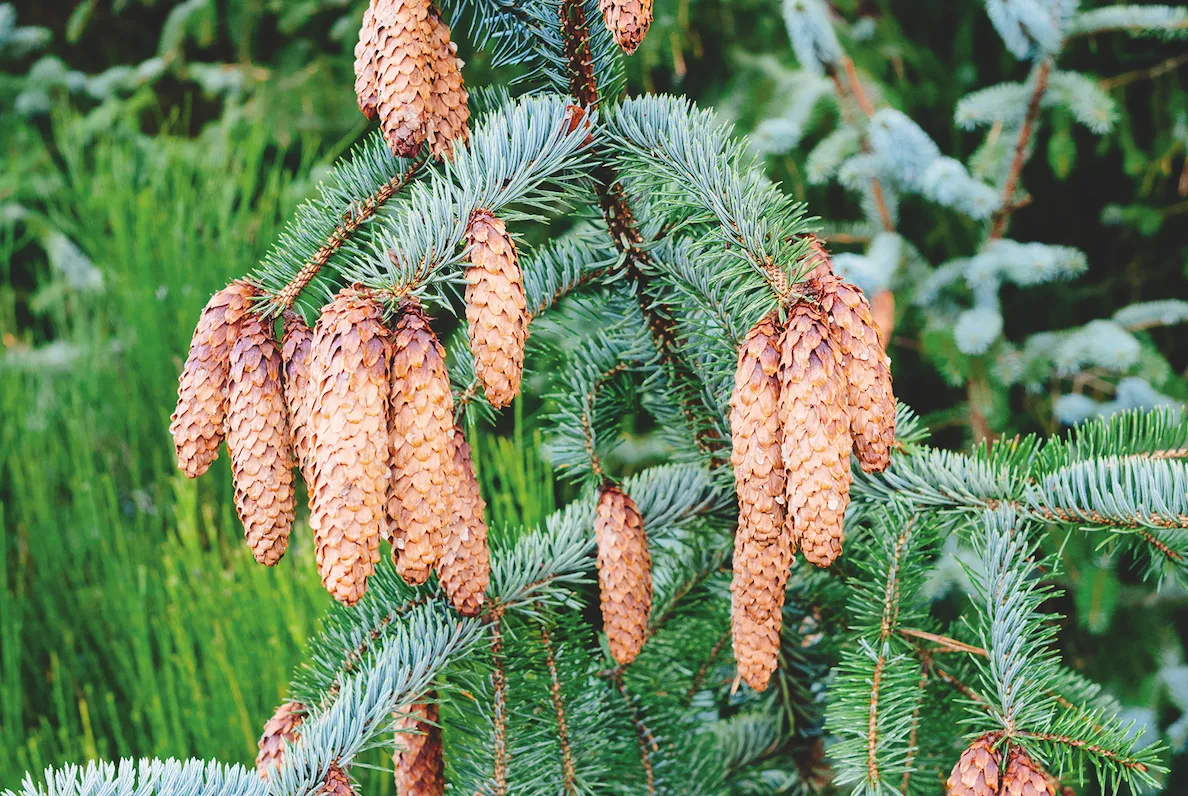
Sitka spruce cones grow to roughly 10cm long. The sitka species was introduced from North America in the 19th century. Pale-brown pendulous cones have thin, flexible scales. Young cones are green.
Norway spruce, Picea abies
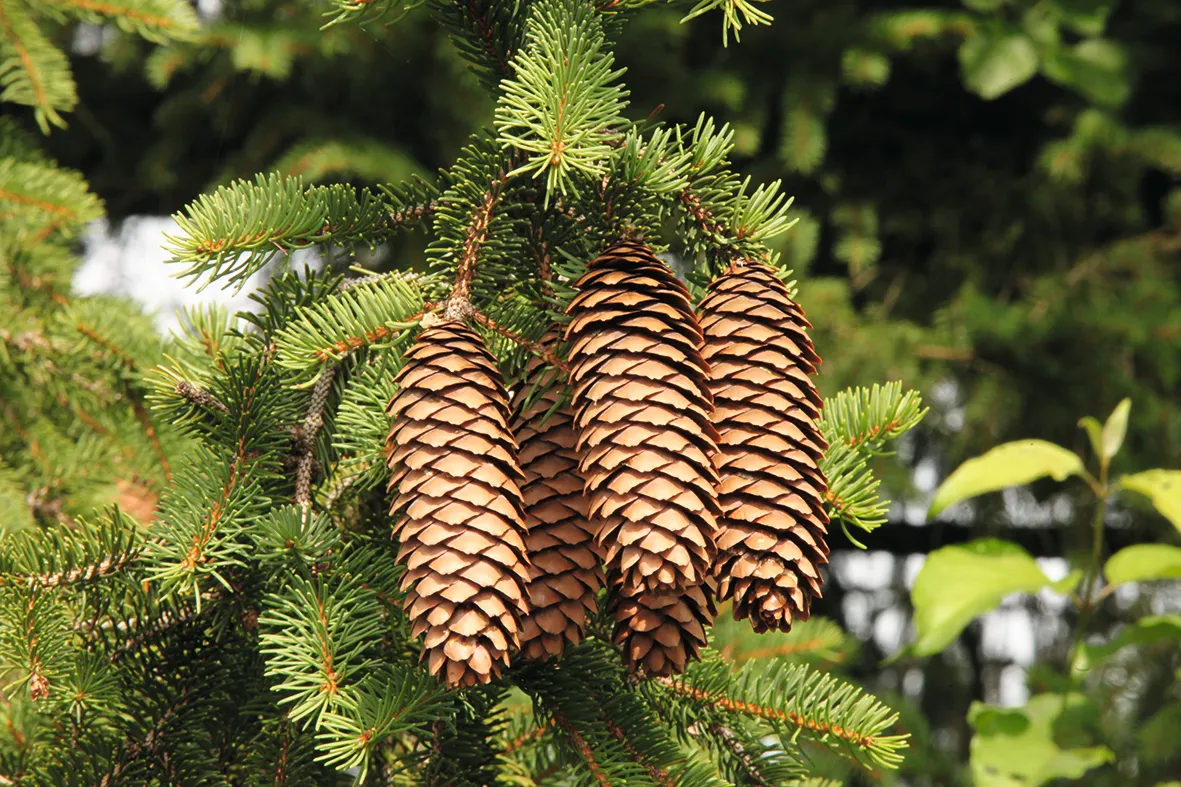
The Norway spruce cone grows up to 20cm long. A native of northern and central Europe, this species has the largest cones, which are red brown with diamond-shaped scales.
Lodgepole pine, Pinus contorta
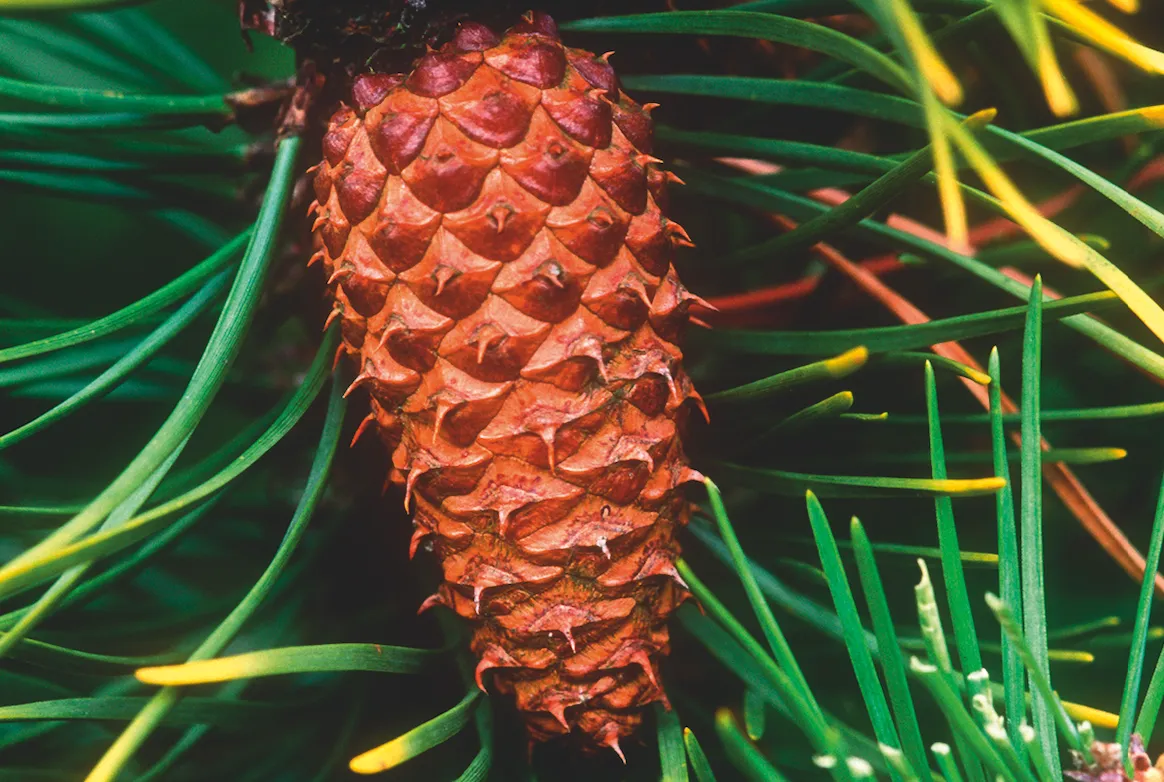
Lodgepole pine cones are between 3–7cm long. Cones vary from cylindrical to egg-shaped with prickly scales. This native tree of North America is popular in modern forestry.
Corsican pine, Pinus nigra
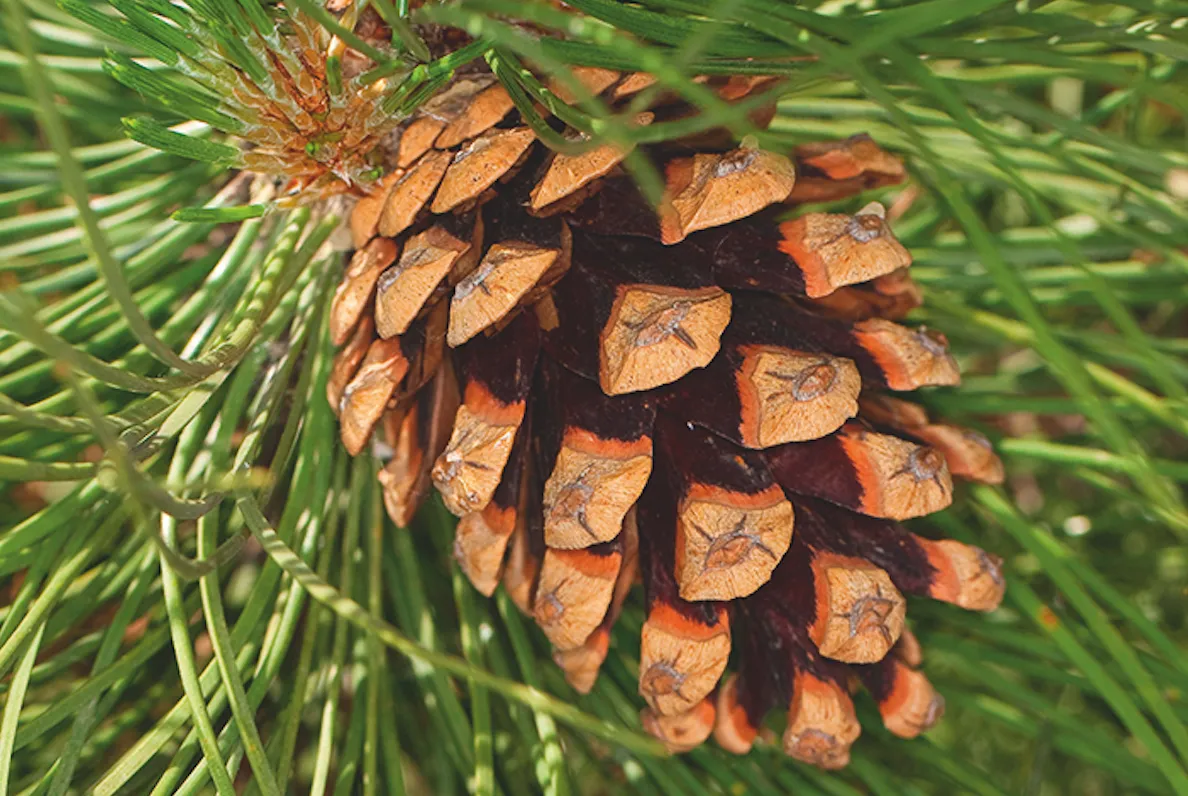
Corsican pine cones grow 7–8cm long. A Mediterranean variety of black pine, this species has grey-brown cones when mature. They are often lopsided and uneven in shape.
Western hemlock, Tsuga heterophylla
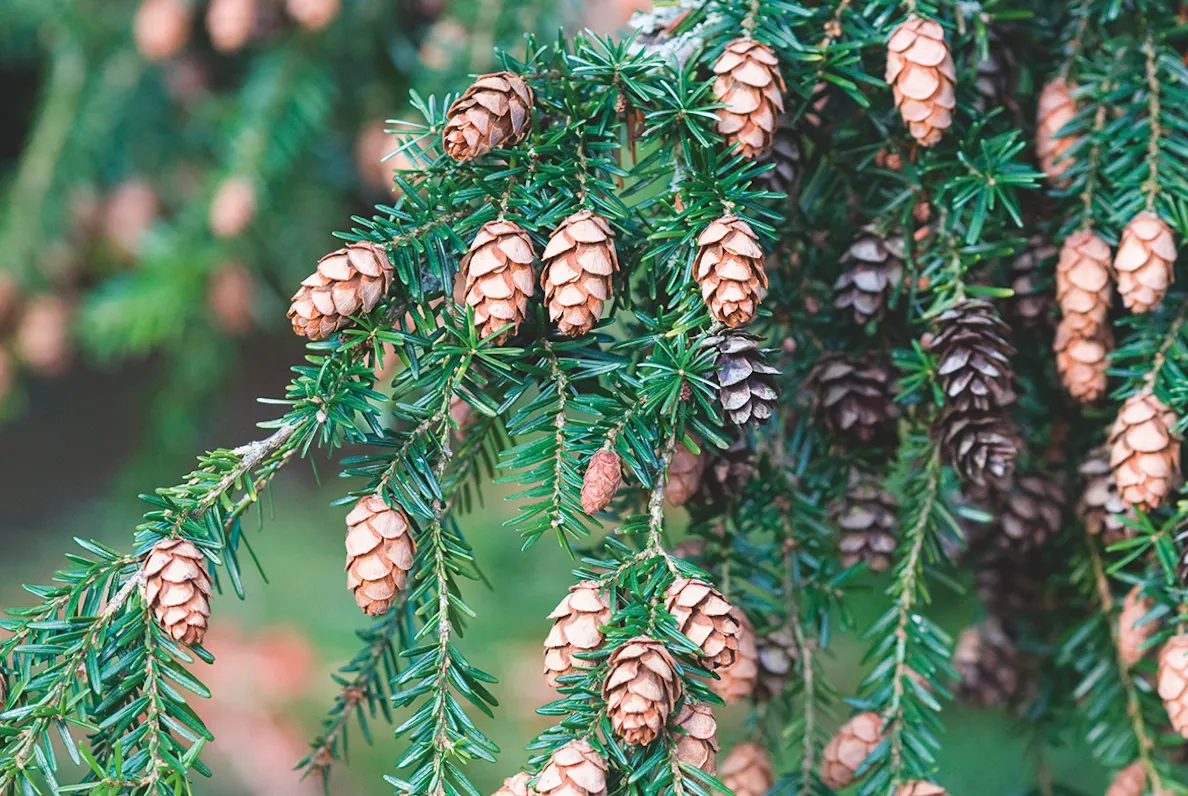
Western hemlock cones are usually 1.5–3cm long. A native of the west coast of North America, its tiny brown (green when young) oval cones have up to 25 soft, flexible scales.
European larch, Larix decidua
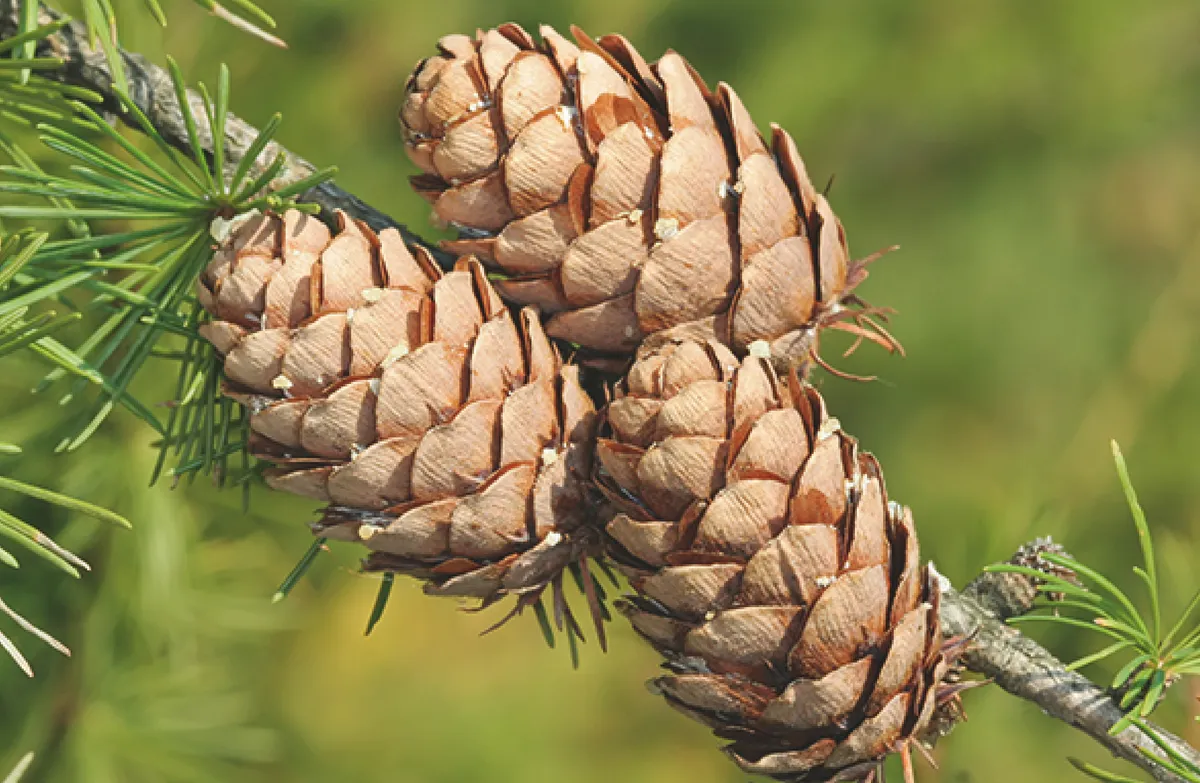
European larch cones grow 3–4cm long. Introduced from central Europe in the 17th century, larch has clusters of greeny-red cones with large scales that mature to a red-brown.
Noble fir, Abies procera
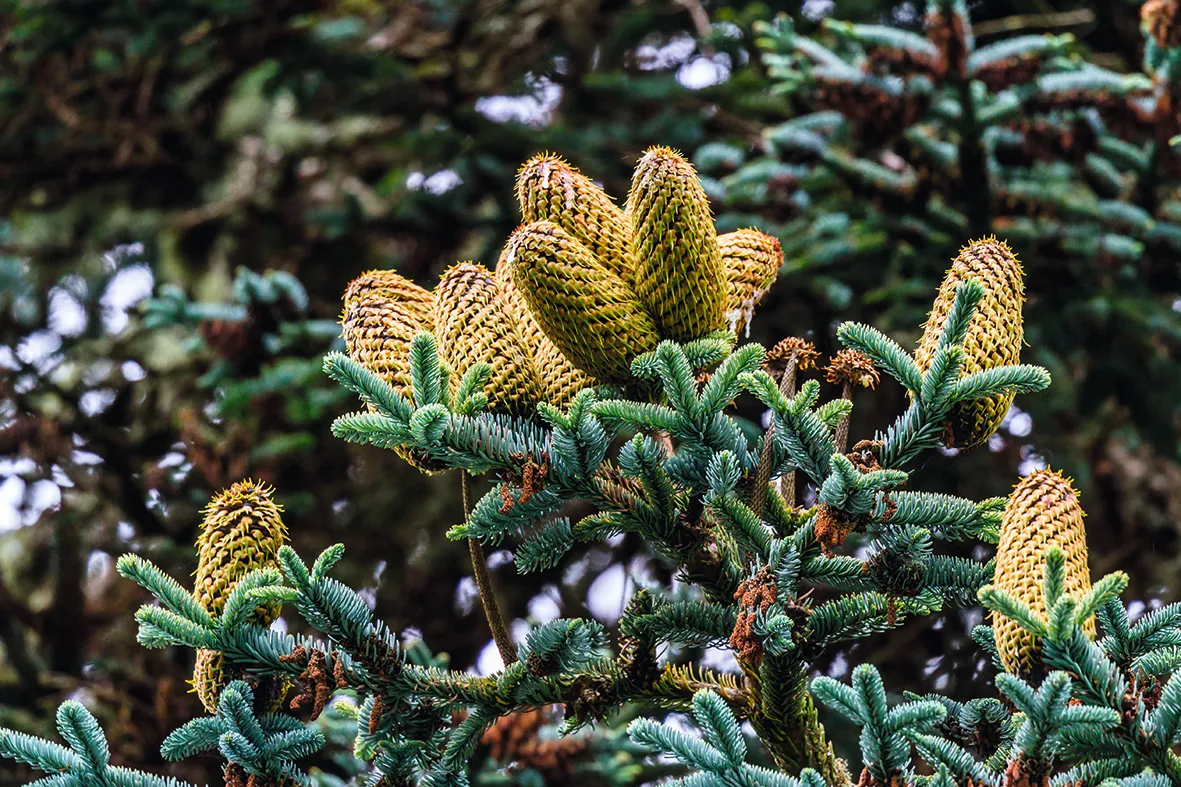
Noble fir cones can be up up to 22cm long. The pineapple-like green-brown cones of this North American native sit upright rather than dangling and disintegrate before falling.
Douglas fir, Pseudotsuga menziesii
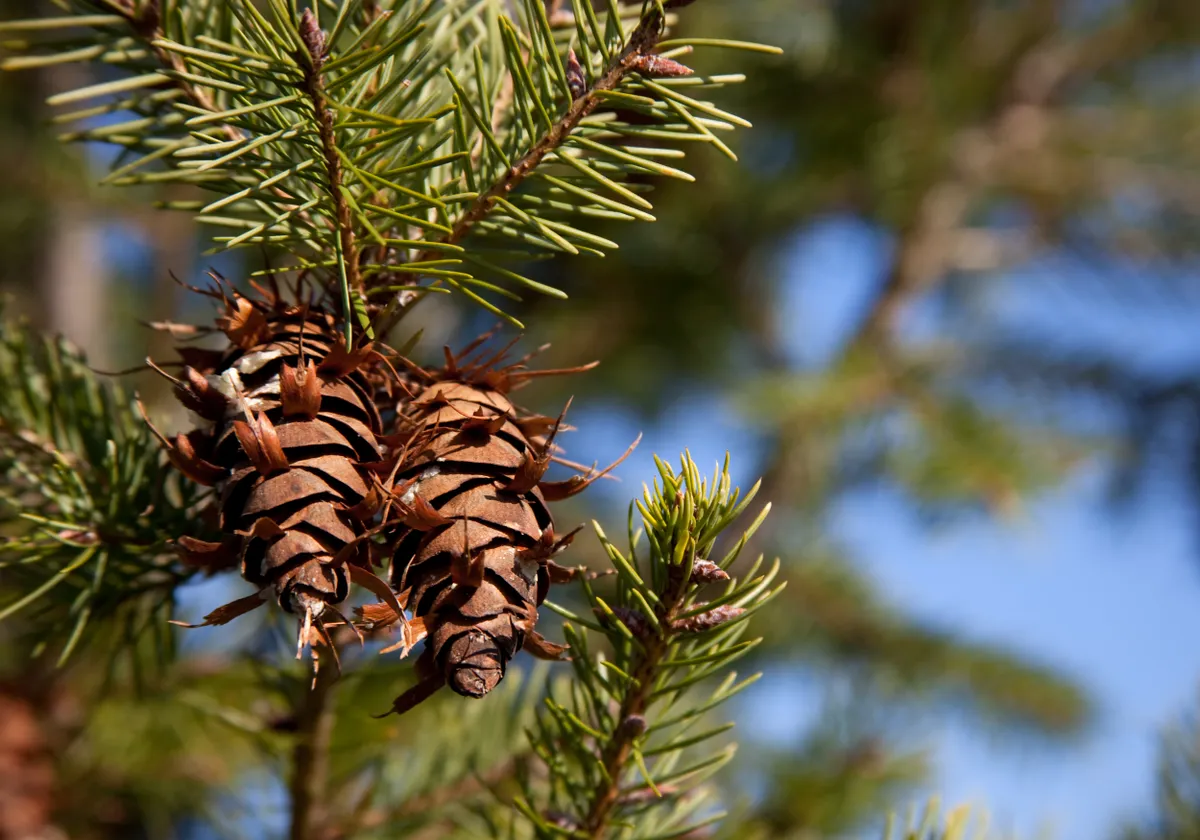
Douglas fir cones are usually about 10cm long. A North American native brought to the UK in the 19th century. This pendulous cone has large scales ending in a three-pointed bract.